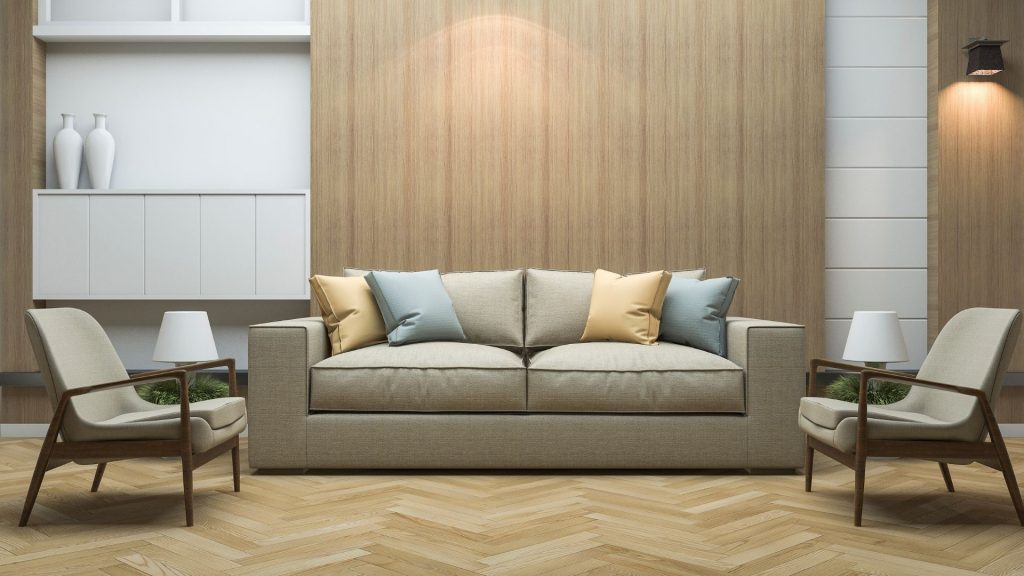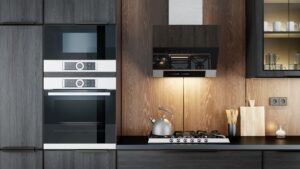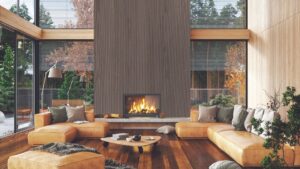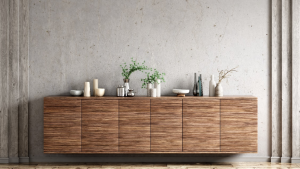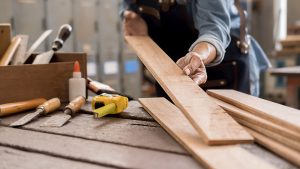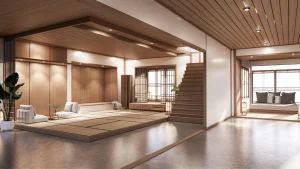Plywood is used as the leading woodwork material for all purposes, be it interiors, furniture, cabinets or furnishings. The credit goes entirely to the excellent advantages it offers.
Plywood has a high screw holding capacity and strength, and it protects against termite infestations and humidity if the quality is high. Yet, many people consider Medium Density Fibrewood or MDF as an alternative. But is MDF a better alternative to plywood?
Let us explore this question in detail.
First things first…
What is Plywood?
Plywood is made by bonding together thin sheets of wood veneer. Several layers of these sheets are compressed and bonded under heat and pressure using a resin.
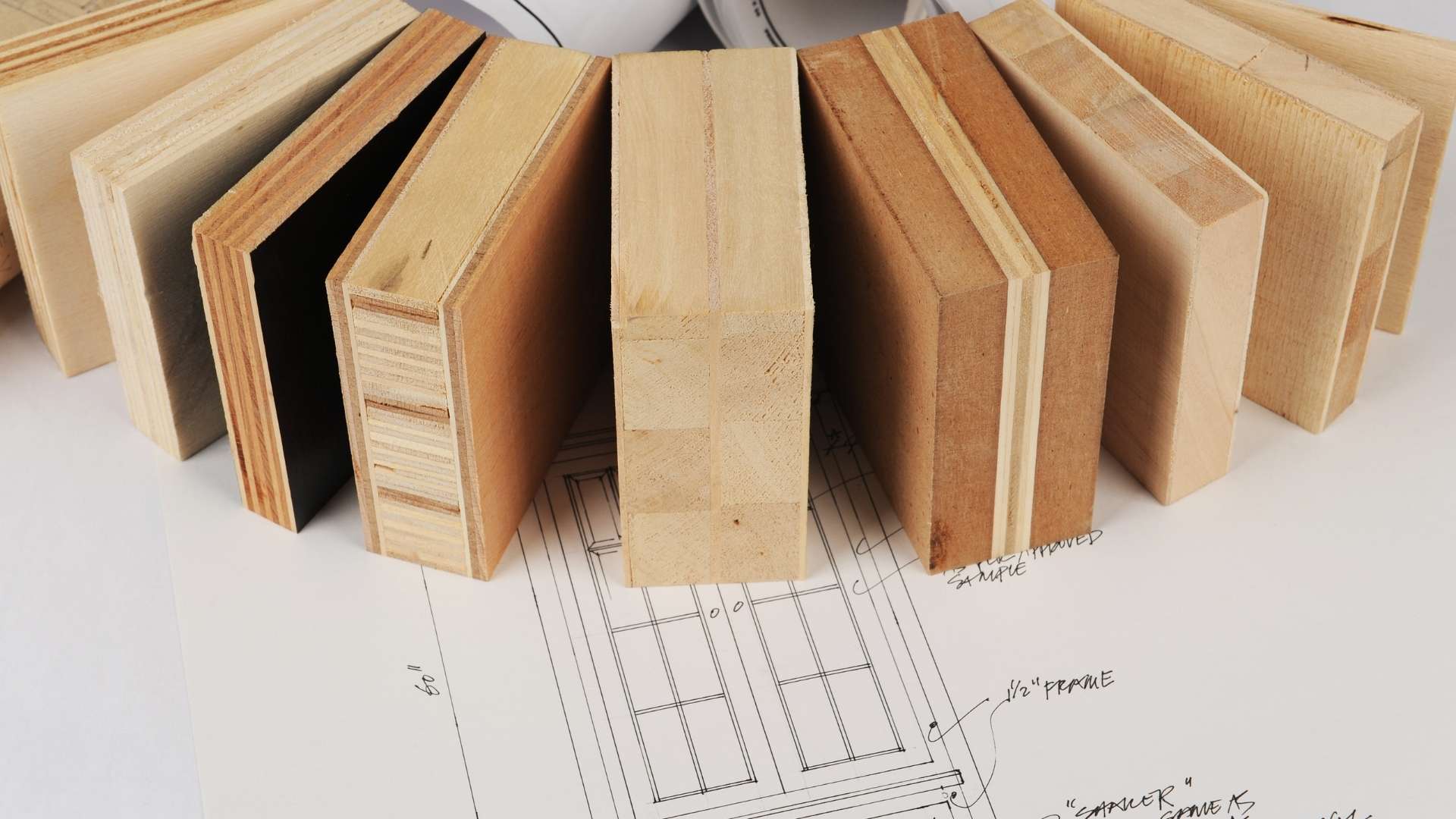
What is MDF?
An MDF or Medium Density Fibreboard is a board made from wood chip particles ground down to its fiber and bonded using a resin under high temperature and pressure.

Plywood Vs. MDF
Here are some factors we can use to compare Plywood & MDF –
-
Strength
Durability is the number one factor to be considered when determining what material to use for interiors and furniture. And the most important sign of how durable the wood is, is the strength of the material.
High-quality plywood is highly durable. Using a powerful raisin, the veneer gets bonded together which makes it considerably strong. On the other hand, MDF is made from wood chip particles instead of wood sheets, and thus, it is inferior in strength.
-
Screw Holding Strength
Nail or screw holding capacity is one of the critical advantages of using plywood. Interestingly, even high-density fibrewood doesn’t compare to high-quality plywood when it comes to screw or nail holding strength.
-
Termite Infestation
Termites are natural enemies of wood products. Both high-quality plywood and high-density MDF can resist termite attacks. Some of the most reputed brands that deal in plywood have been offering lifetime warranties against termite infestation for decades.
-
Moisture
Both MDF and poor-quality plywood are unable to withstand moisture exposure. That being said, you can opt for high-quality Boiling Water Proof (BWP) plywood which can even withstand being exposed to boiling water for up to 72 hours.
Unfortunately, such solutions do not exist for MDF which will swell at the slightest increase in moisture, making it particularly unsuitable for Indian conditions. Even high-density MDF cannot tolerate prolonged exposure to water as it tremendously reduces the durability of MDF products. Hence, plywood ranks higher than MDF in this regard.
-
Human Health
MDF leaves a bad odour at high temperatures or when exposed to high moisture because of the chemicals used to bond the particles. These chemicals are harmful to humans.
In the case of plywood, synthetic resins used in manufacturing them are made of Formaldehyde (also used in MDF), a known carcinogenic with cancer-causing properties and may have long-term harmful effects.
However, it is true only in case of high exposure, and there is no need to be concerned about it when using the highest quality plywood.
Just look out for E1 & E0 grade plywood products as they are safe for human exposure and are listed under the norms set by the European Union to supervise what quantity of Formaldehyde was used in wood products.
So even in terms of human health, using plywood is far better than MDF.
-
Impact on the Environment
Cutting MDF produces a significant amount of sawdust which contributes to environmental pollution and can harm human lungs if the manufacturer fails to take the desired precautions.
Plywood is comparatively more environmentally-friendly and thus far more desirable. Additionally, one can buy plywood certified by agencies like Forest Stewardship Council (FSC). FSC is an American NGO considered the Gold Standard for empowering forest-based sustainable products.
-
Finishing
A key reason why MDF has become popular is its smooth finishing. However, this is only an advantage over low-grade or unbranded plywood. When it comes to high-quality plywood, there are several smooth and aesthetically appealing options, such as premium face veneers and smoked veneers which surpass MDF in terms of aesthetically-appealing finish.
-
Load Bearing Capacity
A major advantage of using plywood is its high load-bearing capacity. MDF, on the other hand, cannot hold heavyweights and will break down quickly under load. This makes plywood a far more viable option than MDF.
Closing Thoughts
When it comes to durability, usage, and strength, high-quality plywood reigns supreme and cannot be compared with MDF. Be wise and protect your and your family’s health and wellbeing by avoiding potentially harmful MDF.
Do you wish to know more? Learn why plywood is the best material for all your woodwork needs from the ‘Smart Plywood Buying Guide’ by India’s leading plywood expert Akhilesh Chitlangia. Read it in just one hour and save time and money by making smart plywood choices.
Download for free here: http://www.plywoodguide.com
